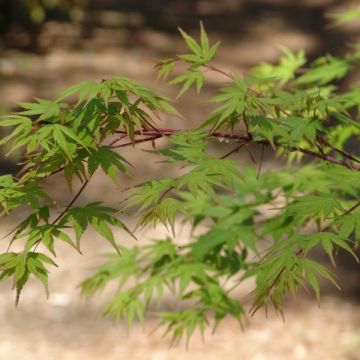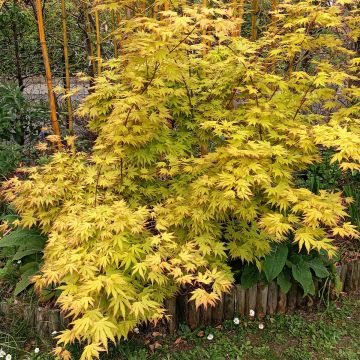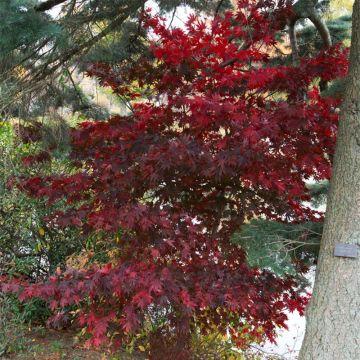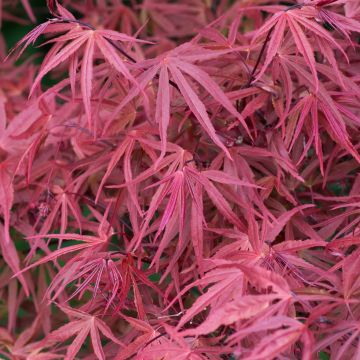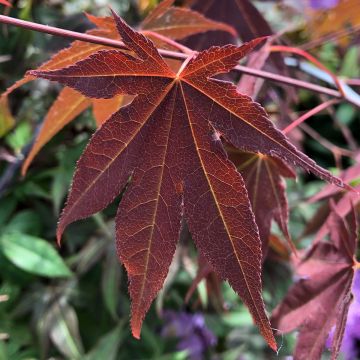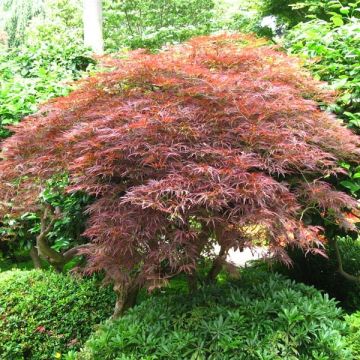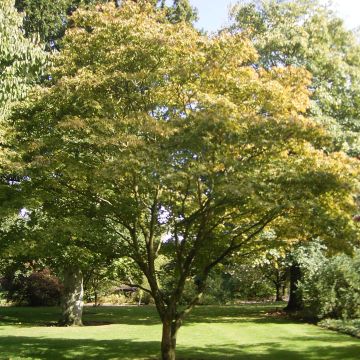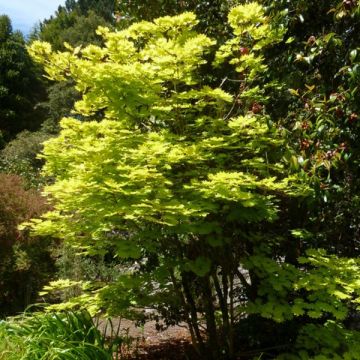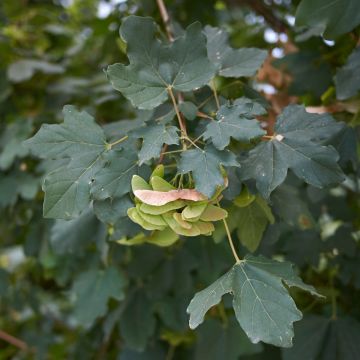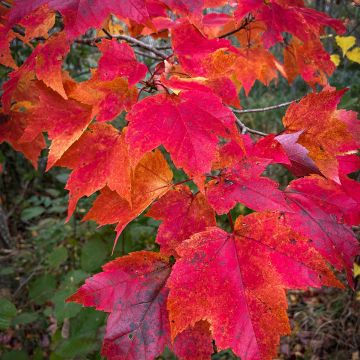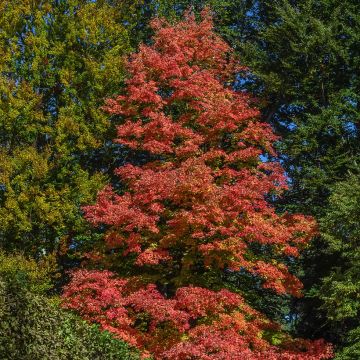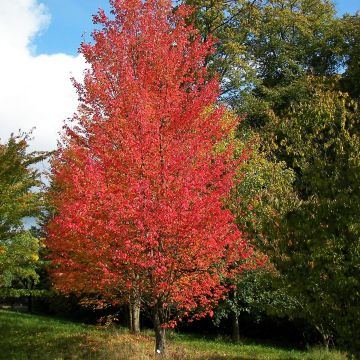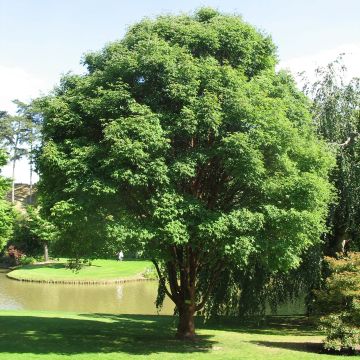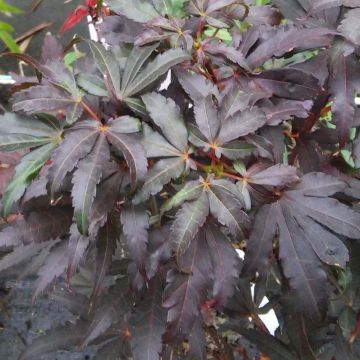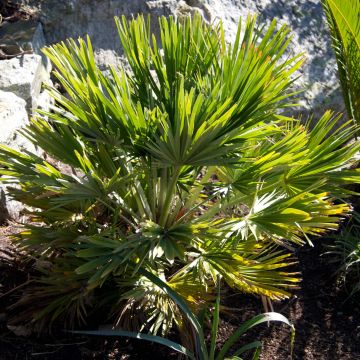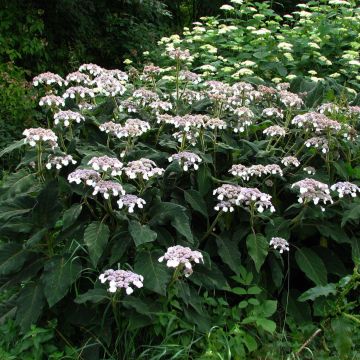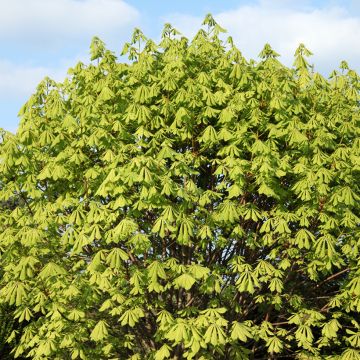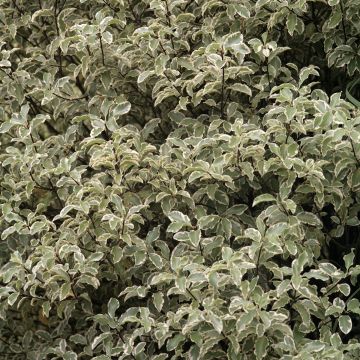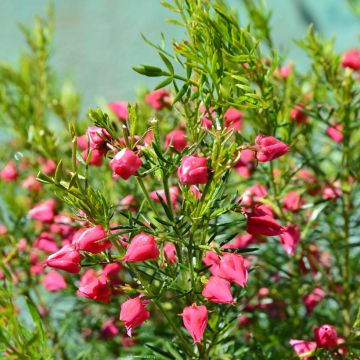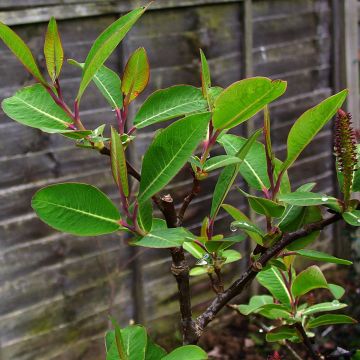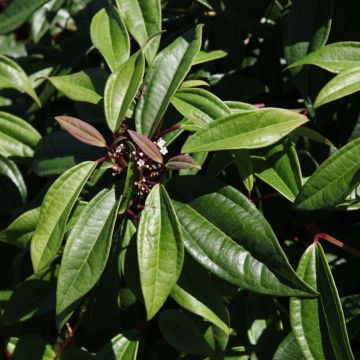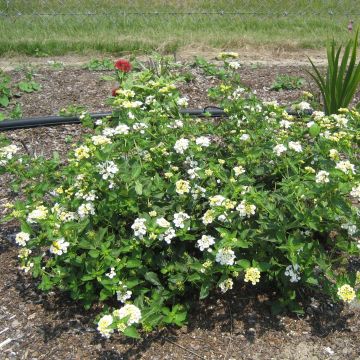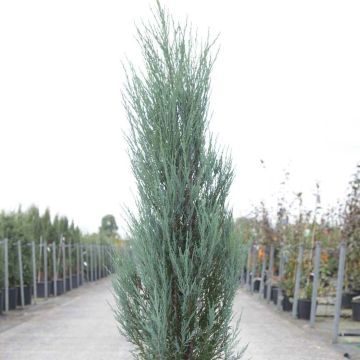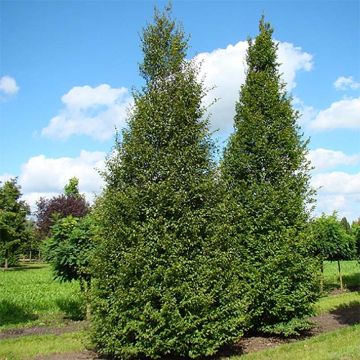Shipping country and language
Your country of residence may be:
Your country of residence is:
For a better user experience on our website, you can select:
Your shipping country:
Andorra
Austria
Belgium
Bulgaria
Canada
Chile
Croatia
Cyprus
Czechia
Denmark
Estonia
Finland
France
Germany
Greece
Hungary
Iceland
Ireland
Italy
Latvia
Lithuania
Luxembourg
Malta
Monaco
Netherlands
Poland
Portugal
Romania
Slovakia
Slovenia
Spain
Sweden
Switzerland
United Kingdom
We only deliver seed and bulb products to your country. If you add other products to your basket, they cannot be shipped.
Language:
French
German
Spanish
English
My Account
Hello
My wish lists
Plantfit
Log in / Register
Existing customer?
New customer?
Create an account to track your orders, access our customer service and, if you wish, make the most of our upcoming offers.


Acer pseudoplatanus Corstorphinense - Sycamore maple
Acer pseudoplatanus Corstorphinense - Sycamore maple
Acer pseudoplatanus Corstorphinense
Sycamore maple, Sycamore, False plane, Mock plane.
Why not try an alternative variety in stock?
View all →Order in the next for dispatch today!
Dispatch by letter from €3.90.
Delivery charge from €5.90 Oversize package delivery charge from €6.90.
More information
This item is not available in your country.
Schedule delivery date,
and select date in basket
This plant carries a 24 months recovery warranty
More information
We guarantee the quality of our plants for a full growing cycle, and will replace at our expense any plant that fails to recover under normal climatic and planting conditions.
Oversize package: home delivery by special carrier from €6.90 per order..
Express home delivery from €8.90.
Does this plant fit my garden?
Set up your Plantfit profile →
Description
Acer pseudoplatanus 'Corstorphinense' is a variety of Sycamore Maple whose young foliage emerges in a beautiful golden colour. It turns green quite late and, when autumn comes, it turns yellow again. This deciduous tree of medium size is best planted as a specimen to highlight it, or at the edge of large trees to provide it with a light shade that it appreciates. Adapting to most fertile and moist soils, as well as urban atmospheres, it is best for large spaces, as it can grow in size as it ages and has a long lifespan.
The Maple is the most important genus in the small family Aceraceae (which only has one other member, Dipteronia). There are at least 150 species of Maples, native to the entire northern hemisphere (America, Europe, and Asia). They are mostly trees, but sometimes also shrubs, like the beautiful Japanese Maples, almost all deciduous, except for Acer sempervirens. However, they all have opposite leaves and double samara fruits, the "helicopters" of our childhood, which helps to identify them.
Acer pseudoplatanus is a European species, also known as Sycamore, with palmate leaves and large growth. It can reach a height of 30 m at maturity and live up to 500 years. It is found up to 1500 m altitude in the Alps, growing in fertile soils. It likes cool terrains and, although it can develop in sunny exposure, it appreciates partial shade, such as at the edge of a forest. The botanical species has given rise to several horticultural varieties, mostly selected for their purple, variegated, or yellow foliage.
The 'Corstorphinense' Sycamore gets its name from the village of Corstorphine (now a suburb of Edinburgh in Scotland). An ancient tree lived there for over 500 years until 1998, when it was destroyed by a storm. The story goes that the Corstorphinense variety originated from this tree, unless it is a sport (a mutation) of another venerable tree located at Craigflower House, in the coastal region of Fife, also in Scotland. In any case, this naturally occurring variety produces large trees in its country of origin, reaching a height of 25 m and a massive trunk circumference of 4.60 m. In your garden, after 10 years of planting, it should measure up to 7.50 m in height, with an approximate spread of 6 m.
This tree is appreciated for its beautiful palmate foliage, coloured golden yellow with slight orange reflections in spring, when the young shoots emerge. The leaves then gradually evolve to a chartreuse green before finally turning green, later in June. The palmate leaves are composed of five lobes, three large ones and two much smaller lateral ones. They measure an average of about 15 cm in length, with a similar width. Opposite, as in all Maples, the large leaves are borne on long petioles, about a dozen centimetres long. In autumn, they turn yellow again before falling. The small, greenish-yellow flowers, open in April in pendulous spikes measuring 6 to 12 cm long and are nectar-rich. The fruits have two wings, 2.5 cm long, forming an angle of 60 to 90°, and appear on mature subjects.
The 'Corstorphinense' Sycamore will stand out as a specimen or at the edge of larger trees. It is very hardy and adapts to any soil that is sufficiently deep, well-drained, and not too dry. Plant ornamental shrubs like Cornus mas 'Jolico', a male Dogwood that will offer you a magnificent early yellow flowering, before the leaves, decorative and edible red fruits, and beautiful autumn colours predominantly red, under its shade. A Silver California Privet (Ligustrum ovalifolium 'Argenteum') with its finely semi-evergreen foliage, mostly green with creamy-white margins, will create a beautiful contrast with the larger foliage of your Sycamore. Less common but easy to grow and highly decorative, Lonicera tatarica, a shrubby Honeysuckle, will offer you a beautiful light pink spring flowering, followed by decorative orange fruits in summer.
Plant habit
Flowering
Foliage
Botanical data
Acer
pseudoplatanus
Corstorphinense
Sapindaceae
Sycamore maple, Sycamore, False plane, Mock plane.
Acer pseudoplatanus 'Flavomarginatum'
Northern Europe
Planting and care
Acer pseudoplatanus 'Corstorphinense' should be planted in spring or autumn in deep, slightly moist soil, from limestone to moderately acidic, in a sunny or semi-shaded position. In very sunny regions, it should be placed in partial shade, as its foliage is sensitive to intense sunlight. It is perfectly hardy, but strong winds can damage its beautiful foliage. Keep the soil moist during the first two summers after planting. Mulching can be beneficial to maintain good soil moisture, depending on the climate. Pruning is not necessary, except for removing dead wood in spring.
Canker is the main disease that affects maples.
Planting period
Intended location
Care
This item has not been reviewed yet - be the first to leave a review about it.
Striking foliage shrubs
Haven't found what you were looking for?
Hardiness is the lowest winter temperature a plant can endure without suffering serious damage or even dying. However, hardiness is affected by location (a sheltered area, such as a patio), protection (winter cover) and soil type (hardiness is improved by well-drained soil).

Photo Sharing Terms & Conditions
In order to encourage gardeners to interact and share their experiences, Promesse de fleurs offers various media enabling content to be uploaded onto its Site - in particular via the ‘Photo sharing’ module.
The User agrees to refrain from:
- Posting any content that is illegal, prejudicial, insulting, racist, inciteful to hatred, revisionist, contrary to public decency, that infringes on privacy or on the privacy rights of third parties, in particular the publicity rights of persons and goods, intellectual property rights, or the right to privacy.
- Submitting content on behalf of a third party;
- Impersonate the identity of a third party and/or publish any personal information about a third party;
In general, the User undertakes to refrain from any unethical behaviour.
All Content (in particular text, comments, files, images, photos, videos, creative works, etc.), which may be subject to property or intellectual property rights, image or other private rights, shall remain the property of the User, subject to the limited rights granted by the terms of the licence granted by Promesse de fleurs as stated below. Users are at liberty to publish or not to publish such Content on the Site, notably via the ‘Photo Sharing’ facility, and accept that this Content shall be made public and freely accessible, notably on the Internet.
Users further acknowledge, undertake to have ,and guarantee that they hold all necessary rights and permissions to publish such material on the Site, in particular with regard to the legislation in force pertaining to any privacy, property, intellectual property, image, or contractual rights, or rights of any other nature. By publishing such Content on the Site, Users acknowledge accepting full liability as publishers of the Content within the meaning of the law, and grant Promesse de fleurs, free of charge, an inclusive, worldwide licence for the said Content for the entire duration of its publication, including all reproduction, representation, up/downloading, displaying, performing, transmission, and storage rights.
Users also grant permission for their name to be linked to the Content and accept that this link may not always be made available.
By engaging in posting material, Users consent to their Content becoming automatically accessible on the Internet, in particular on other sites and/or blogs and/or web pages of the Promesse de fleurs site, including in particular social pages and the Promesse de fleurs catalogue.
Users may secure the removal of entrusted content free of charge by issuing a simple request via our contact form.
The flowering period indicated on our website applies to countries and regions located in USDA zone 8 (France, the United Kingdom, Ireland, the Netherlands, etc.)
It will vary according to where you live:
- In zones 9 to 10 (Italy, Spain, Greece, etc.), flowering will occur about 2 to 4 weeks earlier.
- In zones 6 to 7 (Germany, Poland, Slovenia, and lower mountainous regions), flowering will be delayed by 2 to 3 weeks.
- In zone 5 (Central Europe, Scandinavia), blooming will be delayed by 3 to 5 weeks.
In temperate climates, pruning of spring-flowering shrubs (forsythia, spireas, etc.) should be done just after flowering.
Pruning of summer-flowering shrubs (Indian Lilac, Perovskia, etc.) can be done in winter or spring.
In cold regions as well as with frost-sensitive plants, avoid pruning too early when severe frosts may still occur.
The planting period indicated on our website applies to countries and regions located in USDA zone 8 (France, United Kingdom, Ireland, Netherlands).
It will vary according to where you live:
- In Mediterranean zones (Marseille, Madrid, Milan, etc.), autumn and winter are the best planting periods.
- In continental zones (Strasbourg, Munich, Vienna, etc.), delay planting by 2 to 3 weeks in spring and bring it forward by 2 to 4 weeks in autumn.
- In mountainous regions (the Alps, Pyrenees, Carpathians, etc.), it is best to plant in late spring (May-June) or late summer (August-September).
The harvesting period indicated on our website applies to countries and regions in USDA zone 8 (France, England, Ireland, the Netherlands).
In colder areas (Scandinavia, Poland, Austria...) fruit and vegetable harvests are likely to be delayed by 3-4 weeks.
In warmer areas (Italy, Spain, Greece, etc.), harvesting will probably take place earlier, depending on weather conditions.
The sowing periods indicated on our website apply to countries and regions within USDA Zone 8 (France, UK, Ireland, Netherlands).
In colder areas (Scandinavia, Poland, Austria...), delay any outdoor sowing by 3-4 weeks, or sow under glass.
In warmer climes (Italy, Spain, Greece, etc.), bring outdoor sowing forward by a few weeks.
